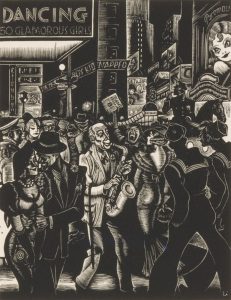By 1920, more Americans lived in cities than rural areas for the first time in history. With soaring buildings, bustling factories, electric lighting, and crowds of people, the modern city epitomized significant changes in American life. As centers of commerce and cultural vibrancy, cities like Chicago offered recreation to all social classes. Electrified streetcars, elevated trains, and subways provided city dwellers with swift transportation. Inside electric-powered factories, workers toiled night and day on production lines, churning out products for the masses. On the streets and in crowded apartments, people of different racial, ethnic, cultural, and economic backgrounds jostled together, producing both the tensions and vitality of city life.
WATCH: New York City in 1929.
Black and white video of crowds of people, automobiles, streetcars, and flashing signs on the streets in New York City.
New York City street scenes, 1929. Fox Movietone News Collection, Moving Image Research Collections, University of South Carolina.
Migration
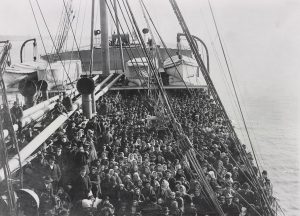
Factory and industrial jobs in expanding cities attracted waves of immigrants from Europe, Asia, and Latin America, as well as Black migrants from the American South. These individuals and families settled in towns and formed distinct communities. Between 1880 and 1920, nearly 20 million immigrants, mainly from Southern and Eastern Europe, arrived in America. Many settled in Northeastern and Midwestern cities like Chicago. Amelia Thoridl, of Germany, one of the Wormser’s maids, was among them.
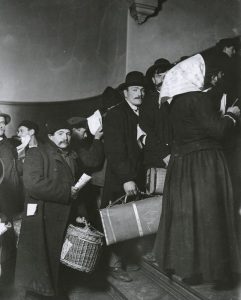
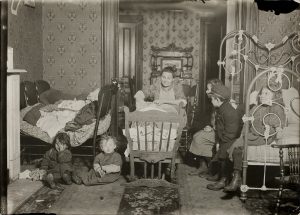
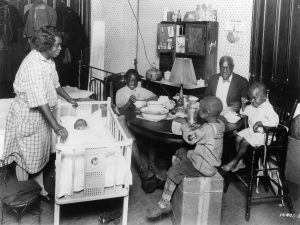
Working-class immigrants contended with many of the problems created by the industrialization and rapid expansion of cities, namely wealth inequality, dangerous working conditions, overcrowding, and sanitation issues. Settlement houses, run by female social workers, and charitable institutions offered social services to recent immigrants to alleviate hardship and facilitate the immigrants’ Americanization. Leo Wormser served as a trustee to one such organization, the Jewish Charities of Chicago, which provided educational, medical, and recreational resources to Jewish immigrants in the city.

Skyscrapers
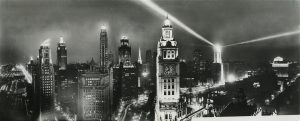
As urban populations increased, cities expanded both outwards and upwards. The development of steel-framed structures, electric elevators, and better ventilation systems ushered in the skyscraper era, which emerged in Chicago in the late nineteenth century. To the public, skyscrapers symbolized power, innovation, and a uniquely American modernity. The Wormsers themselves lived in one of the many luxury high rises erected during the 1920s. When it was completed in 1928, the Drake Tower was the tallest residential building in Chicago.
WATCH: Construction workers build a skyscraper in Manhattan.
Black and white video of construction workers installing rivets with little to no protective equipment on a skyscraper.
Construction workers work on the Lincoln Building, New York, 1929. Fox Movietone News Collection, Moving Image Research Collections, University of South Carolina.
